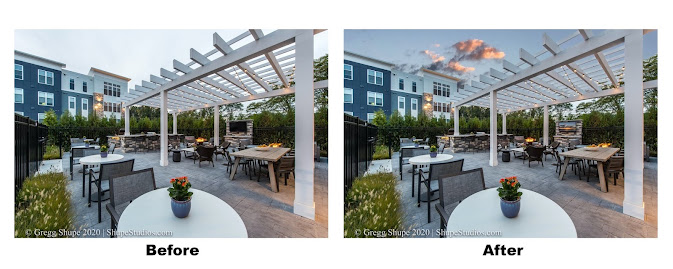FLEMBIANT -EDIGHT: The art of dynamic contrast
In the scope of professional photography and image enlargement, it is an art form in itself to achieve an ideal balance between light and shade and shade. A technique that has achieved considerable traction in recent years is a burning editing, a method that focuses on creating dynamic contrast while at the same time a natural and authentic shape. Whether you work with High End Commercial Editing, Property Intendance or High End Repeating Properties, burning editing can lift your images by bringing the best in both highlights and shadows. In this blog we will participate in the art of flambial editing and find out how it can change your work.
Understanding flaming editing begins with recognition as a variant of HDR editing (high dynamic area) that emphasizes more balanced and natural form. Unlike traditional HDR techniques, which can sometimes result in a strongly treated or artificial appearance, the purpose of burning editing is to increase the dynamic limit of an image by preserving its natural Tanwala values. This technique is especially effective in properties and commercial photography, where the goal is to invite and create a property or space to be realistic.
There are many benefits of burning editing. It survives in a very saturated and artificial environment that can sometimes occur with traditional HDR. Instead, it improves the natural opposite and Tanwala values in the image, making it more authentic and attractive. Adopted details are another important advantage. In case of careful combination exposure, flambian editing allows you to preserve details in both highlights and shadows. This property is important when it comes to editing and property afterwards, where all details mean something. Finally, flambient editing gives you flexibility to experiment with different Tanwala values and create unique looks. Whether you prefer a subtle growth or more dramatic effects, burning editing you get it with accuracy.
The expert flaming editing includes many techniques. Sometimes a single exposure can capture the essence of a scene without the requirement for HDR. Editing simple exposure involves working with an image and improving it to bring the best to tonal values. This method is especially useful for maintaining the authenticity of the image and sometimes avoiding artifacts that can come with HDR. Easy exposure editing allows you to make accurate adjustments for exposure, contrast and color, so the final image looks natural and authentic.
While automated HDR software can produce impressive results, manual blending offers a higher level of control and precision. By manually combining exposures in software like Adobe Photoshop, you can make selective adjustments to different parts of the image. This allows you to fine-tune the details and ensure that the final image looks exactly as you envision it. Manual blending is particularly useful for complex scenes where automated HDR might struggle to achieve a seamless result.
In real estate photography, virtual staging can transform an empty room into a welcoming and luxurious space. By adding virtual furniture and decor, you can create a sense of warmth and comfort that makes the property more appealing to potential buyers. Virtual staging is particularly useful in property editing and property retouching, where you want to showcase the full potential of a space. Manual blending allows you to seamlessly integrate these virtual elements into the image, ensuring that they look natural and authentic.
To master flambient editing, you'll need the right tools. Software like Adobe Photoshop and Lightroom are industry standards for a reason. These programs offer powerful features that allow you to blend multiple exposures seamlessly. Additionally, specialized HDR software like Photomatix and Aurora HDR can provide even more advanced options for creating stunning HDR images.
Practical tips for flamboyant editing include shooting multiple exposures to achieve the best results. Capture multiple exposures of the same scene, typically involving three shots: one underexposed, one correctly exposed, and one overexposed. Using a tripod ensures that your exposures align perfectly, helping you avoid any movement between shots and making the blending process smoother. Don't be afraid to experiment with different blending techniques. Whether you're using automated HDR software or manual blending in Photoshop, try different approaches to find the look that works best for your image. Lastly, pay attention to details. Flambient editing is all about the details. Take the time to carefully adjust each element of the image, ensuring that transitions between light and shadow are seamless and natural.
Flambient editing is a powerful technique that can transform your images by enhancing dynamic contrast while maintaining a natural and authentic look. Whether you're working on high end commercial editing, property retouching, or high end real estate retouching, mastering flamboyant editing can help you achieve stunning results. By combining multiple exposures and using techniques like single exposure editing and manual blending, you can create images that are both detailed and authentic.
So, the next time you're faced with a challenging lighting situation, consider the power of flamboyant editing. With the right techniques and tools, you can turn ordinary images into extraordinary works of art. Embrace the art of dynamic contrast, and let your creativity shine.
.png)


Comments
Post a Comment